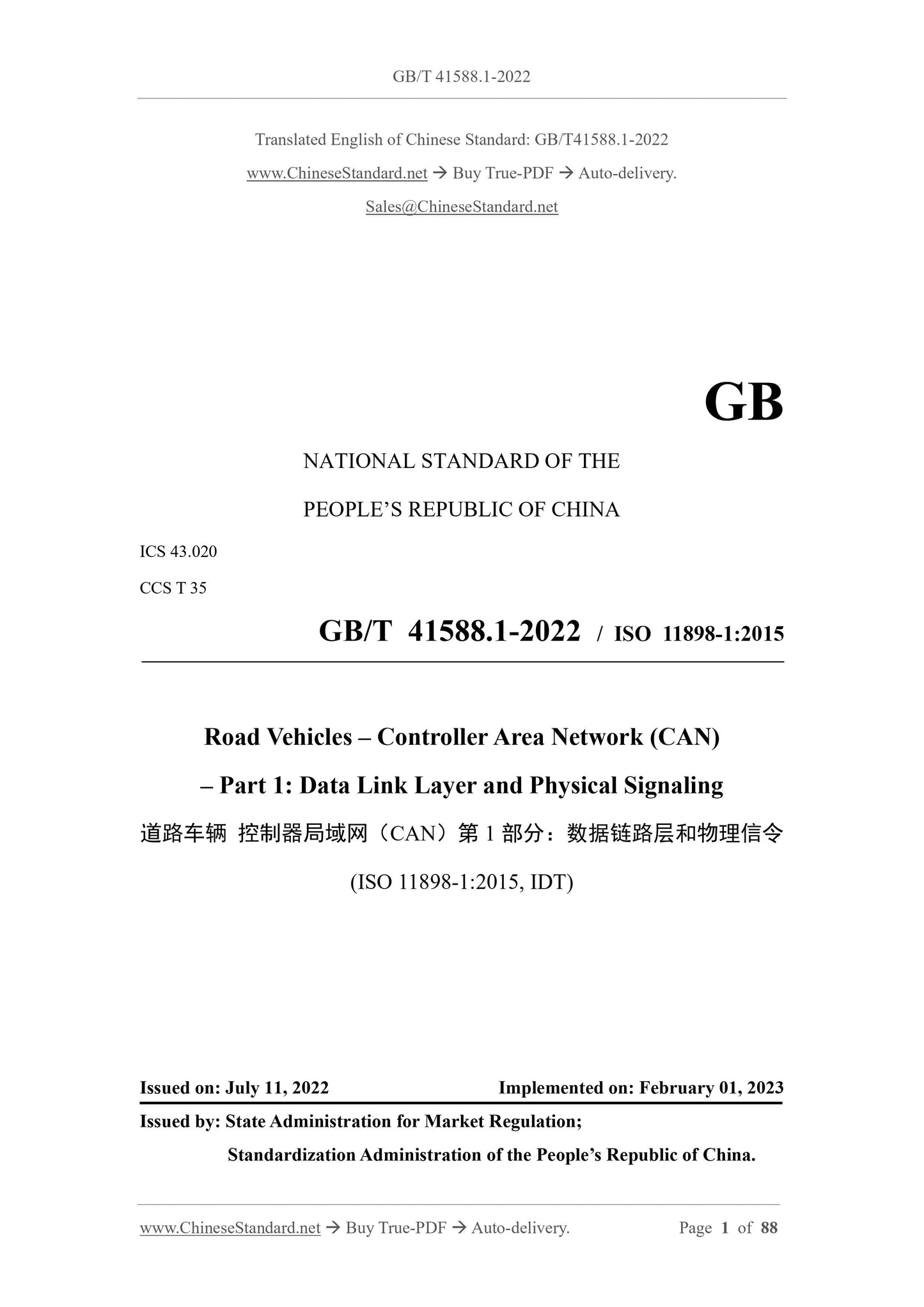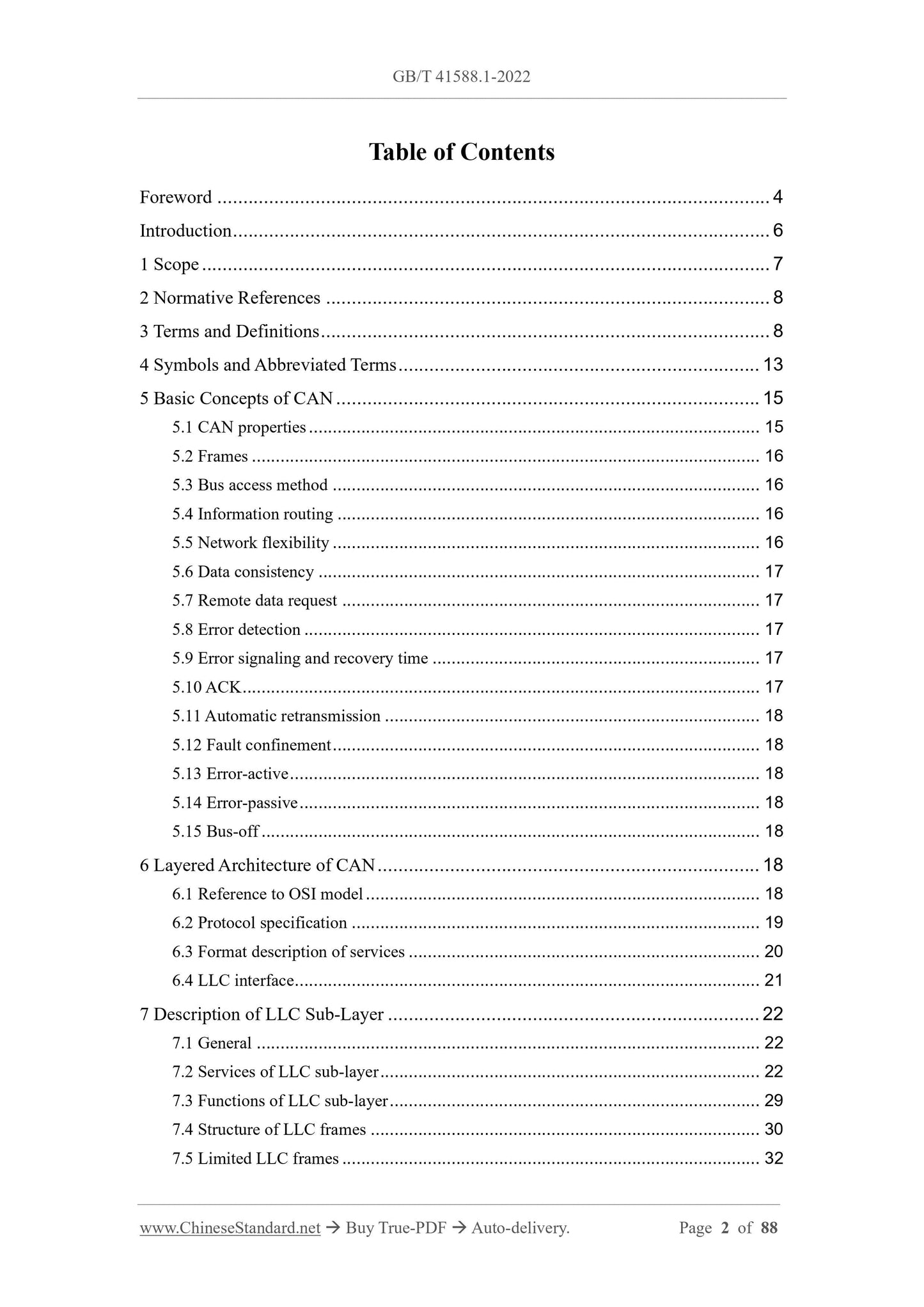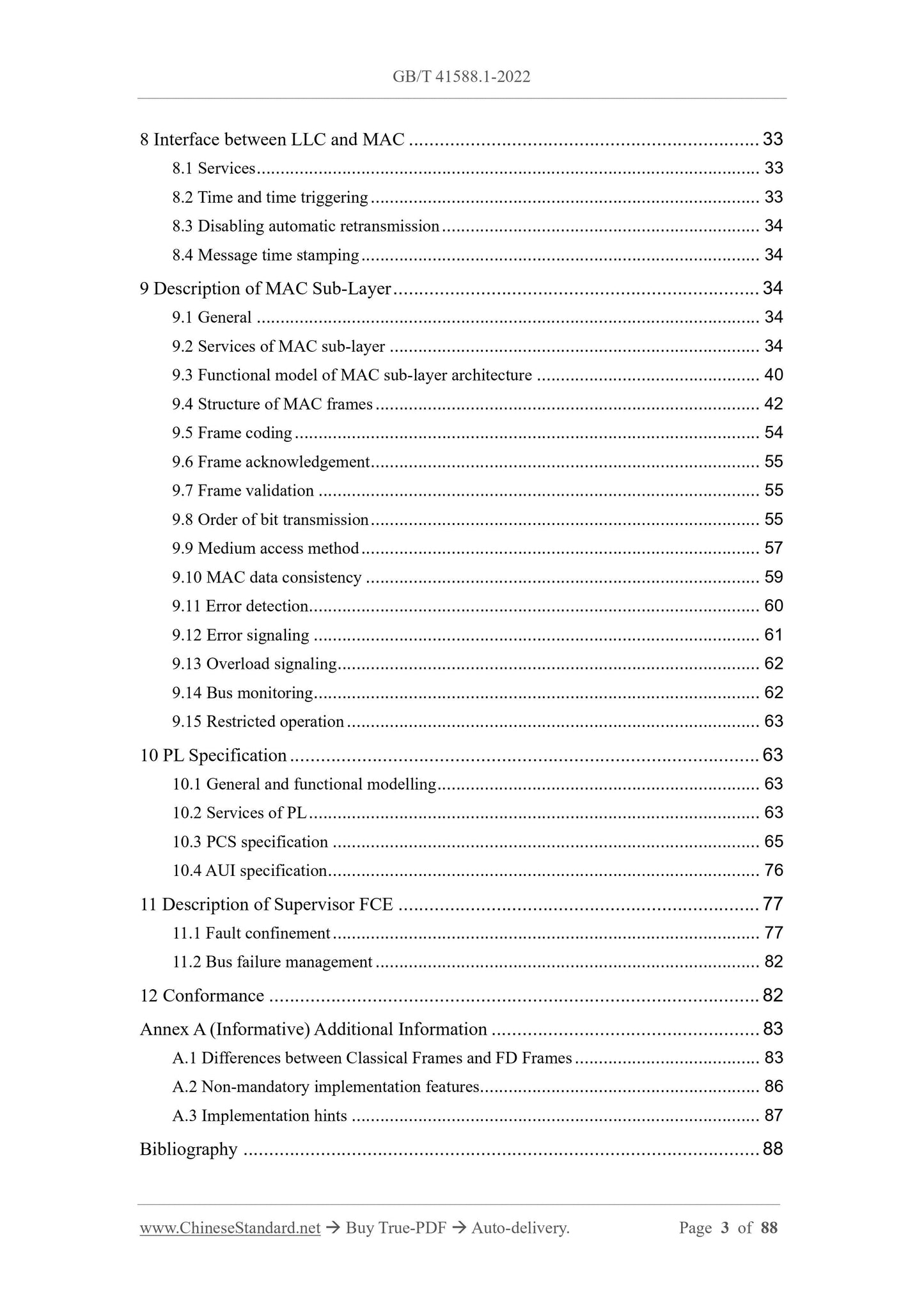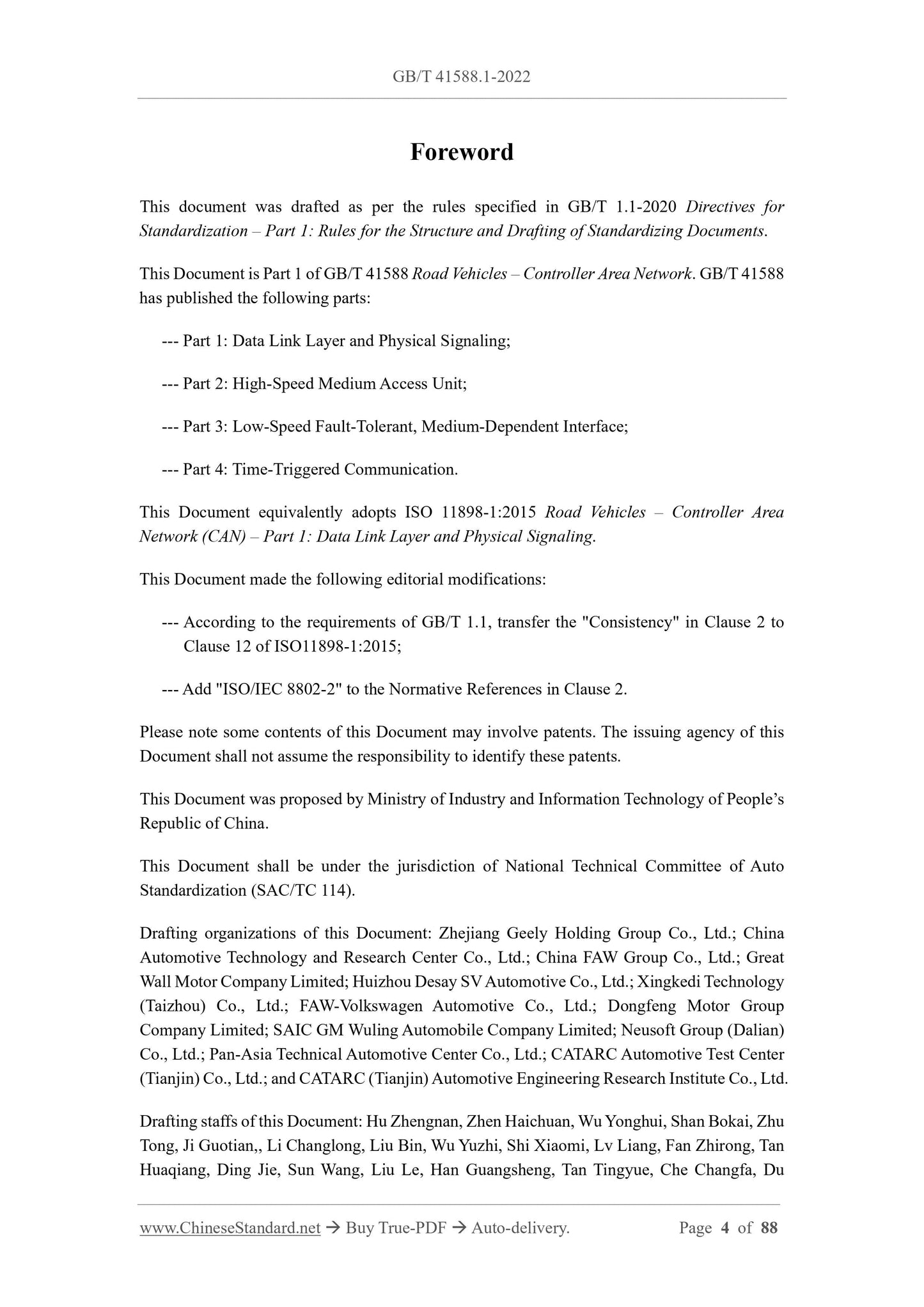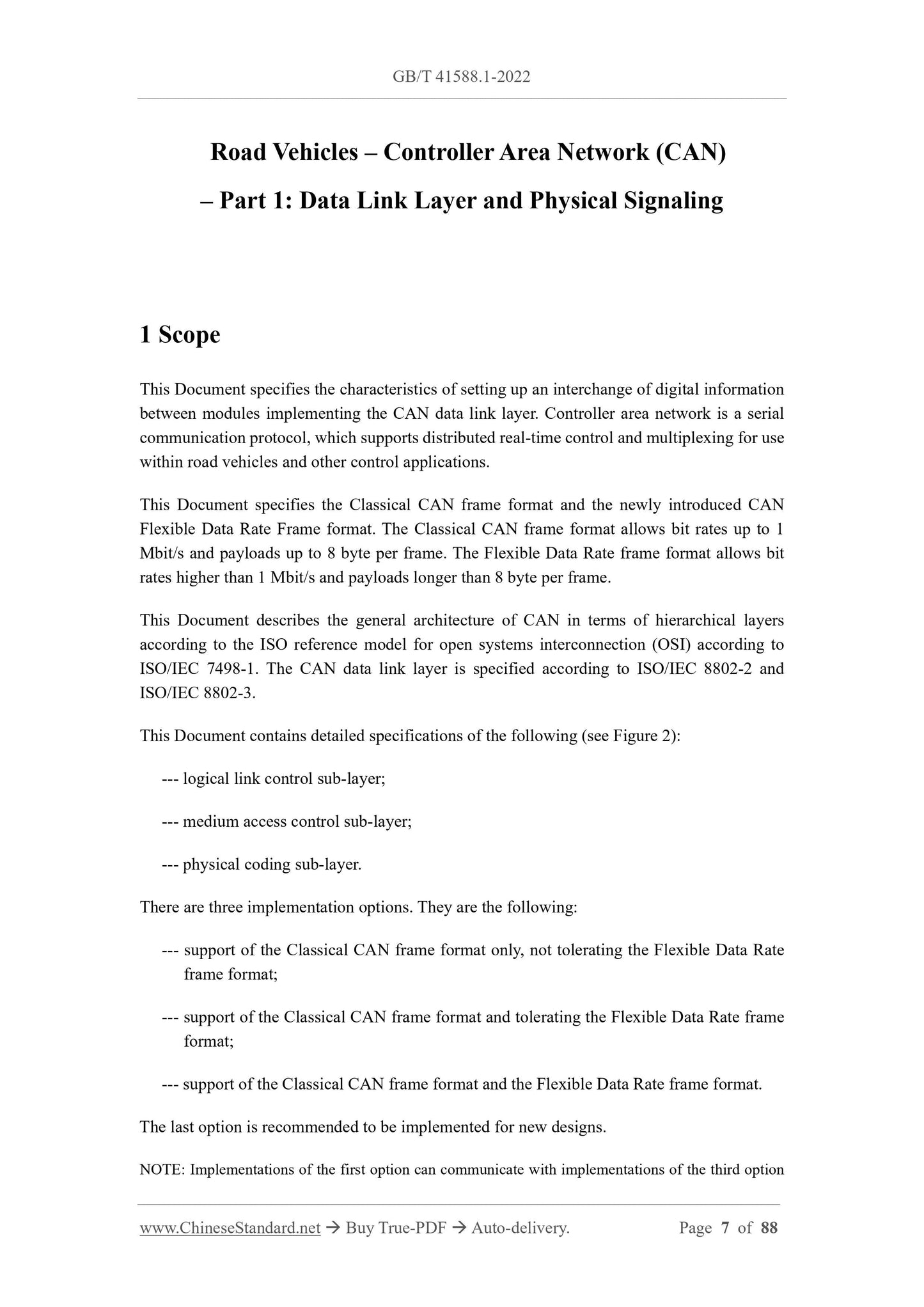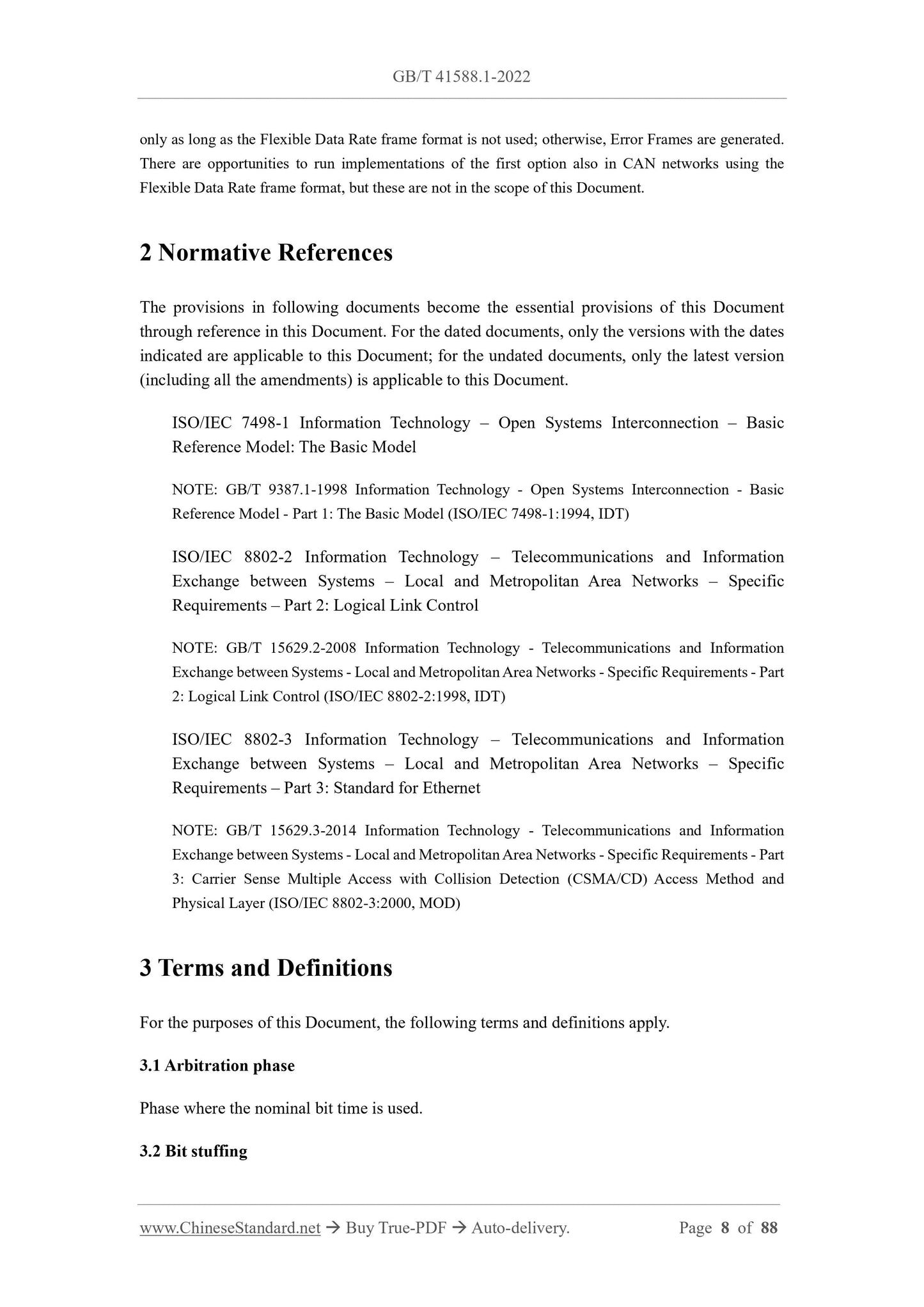1
/
of
6
www.ChineseStandard.us -- Field Test Asia Pte. Ltd.
GB/T 41588.1-2022 English PDF (GB/T41588.1-2022)
GB/T 41588.1-2022 English PDF (GB/T41588.1-2022)
Regular price
$785.00
Regular price
Sale price
$785.00
Unit price
/
per
Shipping calculated at checkout.
Couldn't load pickup availability
GB/T 41588.1-2022: Road vehicles - Controller area network(CAN) - Part 1: Data link layer and physical signalling
Delivery: 9 seconds. Download (and Email) true-PDF + Invoice.Get Quotation: Click GB/T 41588.1-2022 (Self-service in 1-minute)
Newer / historical versions: GB/T 41588.1-2022
Preview True-PDF
Scope
This Document specifies the characteristics of setting up an interchange of digital informationbetween modules implementing the CAN data link layer. Controller area network is a serial
communication protocol, which supports distributed real-time control and multiplexing for use
within road vehicles and other control applications.
This Document specifies the Classical CAN frame format and the newly introduced CAN
Flexible Data Rate Frame format. The Classical CAN frame format allows bit rates up to 1
Mbit/s and payloads up to 8 byte per frame. The Flexible Data Rate frame format allows bit
rates higher than 1 Mbit/s and payloads longer than 8 byte per frame.
This Document describes the general architecture of CAN in terms of hierarchical layers
according to the ISO reference model for open systems interconnection (OSI) according to
ISO/IEC 7498-1.The CAN data link layer is specified according to ISO/IEC 8802-2 and
ISO/IEC 8802-3.
This Document contains detailed specifications of the following (see Figure 2).
--- logical link control sub-layer;
--- medium access control sub-layer;
--- physical coding sub-layer.
There are three implementation options. They are the following.
--- support of the Classical CAN frame format only, not tolerating the Flexible Data Rate
frame format;
--- support of the Classical CAN frame format and tolerating the Flexible Data Rate frame
format;
--- support of the Classical CAN frame format and the Flexible Data Rate frame format.
The last option is recommended to be implemented for new designs.
NOTE. Implementations of the first option can communicate with implementations of the third option
only as long as the Flexible Data Rate frame format is not used; otherwise, Error Frames are generated.
There are opportunities to run implementations of the first option also in CAN networks using the
Flexible Data Rate frame format, but these are not in the scope of this Document.
Basic Data
| Standard ID | GB/T 41588.1-2022 (GB/T41588.1-2022) |
| Description (Translated English) | Road vehicles - Controller area network(CAN) - Part 1: Data link layer and physical signalling |
| Sector / Industry | National Standard (Recommended) |
| Classification of Chinese Standard | T35 |
| Word Count Estimation | 63,642 |
| Issuing agency(ies) | State Administration for Market Regulation, China National Standardization Administration |
Share
